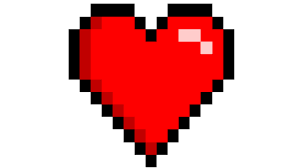 Two professors at USF collaborated to work on improving self-care at home for patients with congestive heart failure. Another goal was to reduce their hospital readmissions. They knew most patients are living on their own after they get out of the hospital and it can be a challenge for patients to keep up with their regimen. They teamed up to create an app that could help them.
Two professors at USF collaborated to work on improving self-care at home for patients with congestive heart failure. Another goal was to reduce their hospital readmissions. They knew most patients are living on their own after they get out of the hospital and it can be a challenge for patients to keep up with their regimen. They teamed up to create an app that could help them.A nurse scientist and an engineer created a smartphone application for patients with heart failure — and the patients participating in a pilot study said they’re finding it useful in helping them make the right choices about their health, according to an article published online by the University of South Florida in Tampa.
Called HeartMapp and now copyrighted by USF, the device can be used on Android smartphones by patients with congestive heart failure.
Ponrathi Athilingam, PhD, assistant professor at the USF College of Nursing, and Miguel Labrador, PhD, professor in the Department of Computer Science and Engineering at the USF College of Engineering, created HeartMapp. Their goal was to improve patient self-care and reduce costly hospital readmissions.
“As a cardiology nurse of 25 years, I know that patients with heart failure, who must follow an intricate medication regimen and self-management practices at home to stay healthy and prevent getting admitted to the hospital, struggle with self-care,” Athilingam said in the article. “After patients leave the hospital, they are alone. However, they do have a phone as a companion. So, we developed this easy-to-use, patient-centered technology to help them keep their heart health on track.”
Monitoring vital signs
The app has six modules which help patients monitor their vital signs, perform breathing and walking exercises, take their medication, read educational information on heart health and see how they’re doing. The app also reminds them to check their weight and blood pressure in the morning and assess any symptoms.
Patients check the app to see if they’re in the green, yellow or red zone. The green zone means they’re doing fine, according to the article. “The red zone means they’re gravely ill and need to immediately go to the hospital,” Athilingam said in the article. “But the goal is to have patients note when they’re in the yellow zone so they can contact their physicians and work to get back to the green zone, she said.
Athilingam and Labrador are testing HeartMapp with nine patients from the USF health cardiology clinic, and USF hopes that will lead to making the app commercially available, according to the article.
The app creators also wrote several articles about small studies they’ve done regarding the app’s usage. In one study, they surveyed 25 patients with congestive heart failure and 12 healthcare workers via questionnaires. In that study published by the journal Applied Nursing Research, the authors, which included Athlingam and Labrador wrote that “patients reported moderate self-confidence in using HeartMapp.”
They also wrote in the abstract: “The healthcare members demonstrated high confidence in recommending HeartMapp to patients and in utilizing data from HeartMapp for clinical decision making.”



